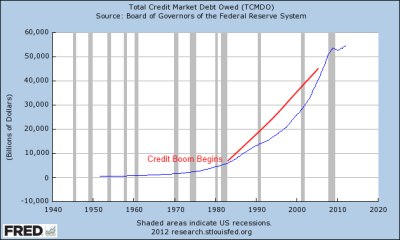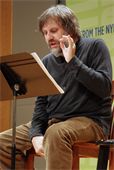 The beliefs of Western liberal society are at a fundamental crossroads. In one direction, lies secular humanism — at the other, lies ancient Judeo-Christian heritage and its supposed claim of relevance. Most individuals walk a very fine line between the two; holding onto the cultural implications of religion, while also not minding its declining involvement in government. Belief acts as a mediator which holds this delicate balance together.
The beliefs of Western liberal society are at a fundamental crossroads. In one direction, lies secular humanism — at the other, lies ancient Judeo-Christian heritage and its supposed claim of relevance. Most individuals walk a very fine line between the two; holding onto the cultural implications of religion, while also not minding its declining involvement in government. Belief acts as a mediator which holds this delicate balance together.
Belief, in and of itself, is a obligatory view. It is a tenet you live your life by, and it has profound implications on your social psychology and the general organization of a civilization. It would be foolish to discredit the influence of religiosity in the West, in spirit and in practice. However, belief can function as a sort of ideological trap. Simply put, acting on a belief is not equivalent to actually believing it. Philosopher Slavoj Zizek provides us with a story to illustrate this point, in which he tells us the tale of physicist Niels Bohr.
“A well-known anecdote about Niels Bohr illustrates the same idea. Surprised at seeing a horseshoe above the door of Bohr’s country house, a visiting scientist said he didn’t believe that horseshoes kept evil spirits out of the house, to which Bohr answered: ‘Neither do I; I have it there because I was told that it works just as well if one doesn’t believe in it!” [1]
 In an excellent passage, Zizek essentially explains the function of belief in modern society. Although individuals may personally not believe an ideology, they act as if they do because they take it others believe. In fear of reprisals, they then live as if the belief is theirs. But there is a twist: what if the other individuals do not believe it either? With this, an entire belief system is build upon the existence of non-belief among individuals. I take religion to be in this same stride, functioning as a belief in a sea of disillusioned disciples.
In an excellent passage, Zizek essentially explains the function of belief in modern society. Although individuals may personally not believe an ideology, they act as if they do because they take it others believe. In fear of reprisals, they then live as if the belief is theirs. But there is a twist: what if the other individuals do not believe it either? With this, an entire belief system is build upon the existence of non-belief among individuals. I take religion to be in this same stride, functioning as a belief in a sea of disillusioned disciples.
Such a statement is hardly revealing to the standard American Christian household. The father takes his son to Church, to educate his child on Christian values. The father, himself, was pressured to do so by his own parents. They would be disappointed if he raised his children without such a pretense. The father, himself, does not believe, but acts as if he believes to give a proper impression on his parents. The child lacks the belief also, but to not disappoint his father, he refuses to tell him. Instead, he acts as if he believes. Here, we have a situation of two non-believers, paradoxically imposing a belief on one another. Would it not be another twist of irony to say the father’s parents do not believe, just as the father and the son do not? This belief is likewise solidified, passed through familial relationships, and built upon a structure of non-belief — giving those trapped within this dilemma the illusion of a belief that is absent from the individual’s own choosing, being imposed on them by the technicalities of human relationships.
This is the death of God. The death of God is not external invasion unto the Christian church hierarchy. It is not an attack from outside the prayer circles — it is within them. It is when God as an entity becomes irrelevant to the actual substance of belief, being replaced by a complex foundation of non-belief. In Europe, trends of non-belief are stronger than in the United States. According to surveys by the Financial Times/Harris Poll, only 27% of individuals living in France truthfully believe in a Christian God or Supreme deity. This is contrasted with 73% of those in the United States [2]. Bearing in mind the different histories of European and American ancestry, I take it that such a large disparity between religiosity is largely due to the culture of the United States. Religious disbelief is looked down upon, even persecuted, in American media and society — denigrated in excessively negative terms. The question is, how many of the religious belief structures in the United States are founded on fear of consequences? Potentially, very many, I would say.
However, the implications extend further than Zizek’s story on ideology. Equally important are those that believe (for cultural reasons generally), but live their lives as if they do not. Done through ritualistic ends, their religious ideology becomes a routine rather than a philosophy of action. For many Western Christians, this is the reality. They find themselves lofting to church on some Sundays, and then vehemently arguing over whether we should say “Merry Christmas” during the holidays, and fighting to preserve prayer before football games [3]. The extent of Christian ideology in American culture has largely become a gimmick of cultural preservation more than anything else, serving as the last backlash of a decaying social phenomenon.
Christian ideology makes many universal claims. It promotes objective truth and meaning, a belief system that is dogmatic and said to be true by its disciples. They have this bastion of knowledge, the key to God’s judgement and mercy, that is said to be the absolute truth. And yet they live their lives as if this is hidden, only resurrecting (excuse the pun) it when socially beneficial. If an individual held such truth of the universe, would they not devote their entire lives if they believed so strongly it was true, rather than bickering over trivialities on cable television? The charade of these religious charlatans defending “Judeo-Christian America” is a testament to the hypocrisy of the ideology in the hearts of those that follow it. True belief would not frequent itself in discussions on media sensationalism, in an attempt to keep what always has been in American society; it would prepare, and act, in the interests of God and rely on his judgements. Perhaps if they took God’s objective truth to its fullest conclusion, they would sit and pray rather than rely on themselves. If they are so convinced of their beliefs, they would be equally be convinced God would give them a hand.
The death of God does not involve the elimination of religion, nor does it involve the tearing down of religious institutions. It involves the hollowing out of religion by its believers. It makes God into a centerpiece of disbelief, propped by complex interlocked relationships and cultural enforcement. A belief propped by non-belief, it finds itself as the comfort to those that fear the destruction of their religious and cultural identity. It finds itself as the poster-child of reactionary backlash, the broken center of the exaggerated dichotomy of secularism and religiosity, and the illusionary opponent of civil institutions by religious disciples that lack the belief themselves. During the height of Catholic ascendancy, the belief was not so fractured. Prayer was seen as a powerful tool; the Devil was a real distinguishable threat. We have long abandoned such views, despite what is heard in Evangelical circles (I can assure you there would be little hesitation for them to take human action over prayer if their own lives were in peril). Let’s be frank, God is dead –The emperor has no clothes on, we are looking straight at him, but we are too naive to admit it.






